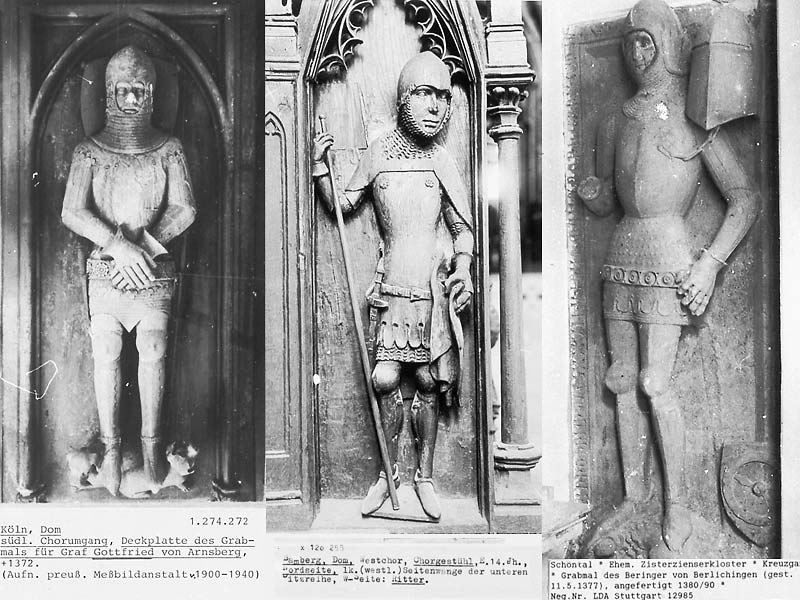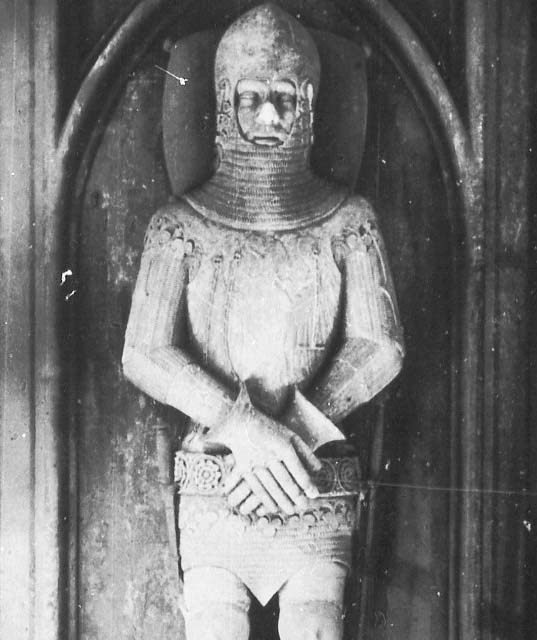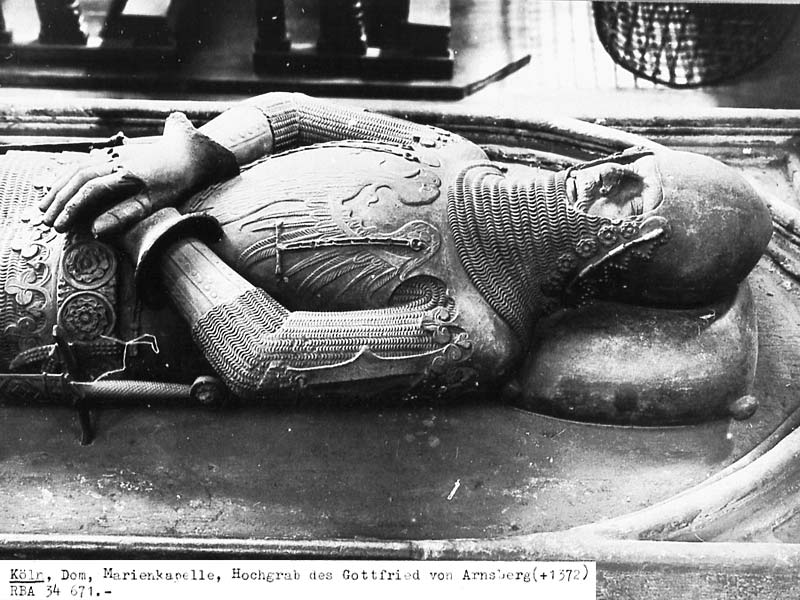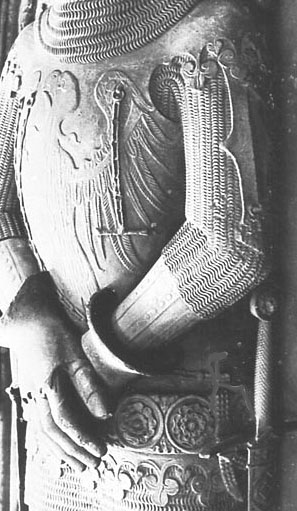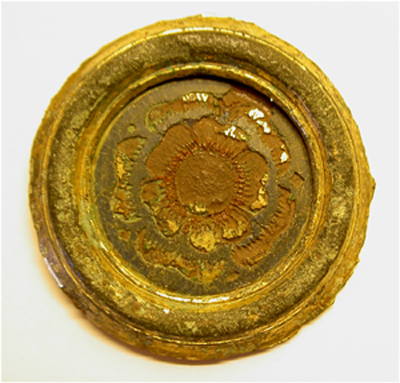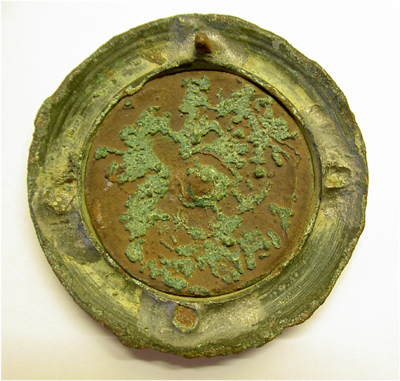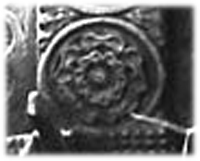Posts: 782 Location: Upstate New York
Mon 27 Nov, 2006 4:54 pm
Hello again!
Some Italian effigies display a similar style of 14th century "transitional" armour with "studded and splinted" elements. The Italian examples often show more decoration than their German counterparts, but there are similarities. Many of these knights were actually Germans in Italian service. The Italian effigies are also slightly earlier than many of the comparable German ones. It seems to have appeared in Italy first, then became popular in Germany during the second half of the 14th century.
Many of these are shown in drawings in David Nicolle's
Arms & Armour of the Crusading Era 1050-1350 Western Europe and the Crusader States. Unfortunately the drawings lack detail, but some are seen in photos in other works.
One of the most decorative armours is seen on the effigy of Lorenzo Acciaioli, who died in 1353.
Ewart Oakeshott's
Sword in Hand has a nice photo of this effigy. Lorenzo's forearms are protected by "studded and splinted" armour similar to that seen on the von Arensberg effigy. On Lorenzo's effigy the rows of vertical "splints" are interspersed with rows of "studs" (or rivets, I don't want to enter into another debate about verbiage here, Charles Henry Ashdown called this armour "studded and splinted" armour, while David Nicolle calls it "splinted" armour, Oakeshott called them "splints", and Christopher Gravett calls this armour "stud-and-splint"). The sleeves of the haubergeon come down to just below the elbow, covering the end of the vambraces. Lorenzo's thighs are protected by either splinted cuisses (Nicolle's interpretation) or gamboised cuishes reinforced with splints (Oakeshott's interpretation). The knees are protected by poleyns in the shape of lion's heads, and the shins by elaborately carved, embossed, or tooled (depending upon the material depicted) greaves. (Oakeshott thought the greaves were metal, while Nicolle interpreted them as tooled leather; they could be either one.)
The tomb slabs of Filippo dei Desideri, of circa 1315, both show some features in common with the later German effigies. This knight obviously wears an earlier style of armour, but does show traces of the rivets of splinted vambraces on his forearms. In this case it is worn with three-quarter length haubergeon sleeves. This knight's greaves may be leather, since they seem to show traces of laces.
The effigy of Burkhard von Steinberg, who died in 1397, shows "studded and splinted" vambraces worn with couters with a small fan. Von Steinberg wears greaves made of separate plates attached together with straps, and a breastplate of beaten metal (not quite a "muscle cuirass") with a medial ridge. A laminated fauld hangs down from the front of the breastplate. Unusually, the knight is depicted wearing a cloak over the armour, a rare feature. This is seen in a photo in Christopher Gravett's
Men-at-Arms 166: German Medieval Armies 1300-1500. (In the caption, the author states that the "
forearms are guarded by stud and splint armour of metal strips attached to leather and reinforced with rivets, which was very popular in Germany and was presumably cheap to produce".)
On the other end of the spectrum, the effigy of Kunz von Haberkorn of 1421 shows a later example of rerebraces laced to an undergarment, this time apparently to a robe or tunic with flowing sleeves worn over the mail haubergeon. The rerebraces cover more of the arm than the rudimentary plates on the von Arsenberg effigy, but they attach in a similar way. The von Haberkorn effigy shows some other interesting and unusual features, including a scale skirt worn over the skirt of the haubergeon. A photo of this effigy can be seen in Vesey Norman's
Arms and Armour.
I hope these effigies weren't too far off topic; they aren't exactly the same, but seem to show the "evolution" of this style of armour. It seems to be predominately a German style, but can be seen on a few English brasses (although in a somewhat different form - some English brasses show armour pieces made in a similar "splinted" fashion).
Stay safe!
